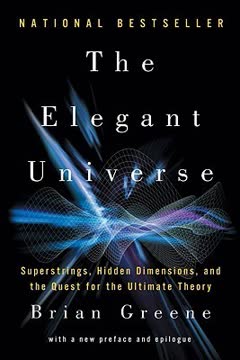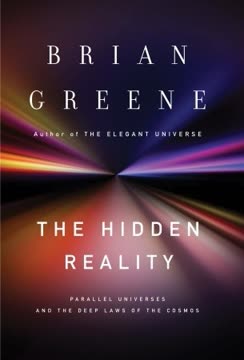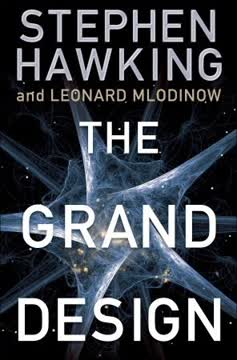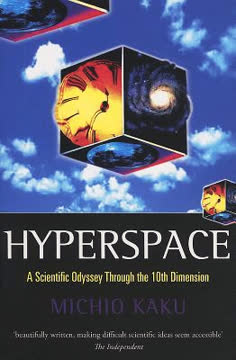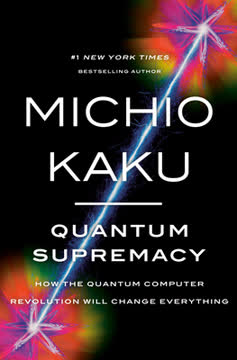نکات کلیدی
1. کاوش فضایی: از زمین تا ستارگان
"زندگی بسیار ارزشمند است که نباید تنها به یک سیاره محدود شود و در معرض تهدیدات سیارهای قرار گیرد."
ضرورت کاوش فضایی. با توجه به تهدیدات وجودی که بشریت بر روی زمین با آنها مواجه است، مانند تغییرات اقلیمی، جنگ هستهای و برخورد سیارکها، سفر به فضا برای بقای ما حیاتی میشود. کاوش فضایی نه تنها یک برنامه پشتیبان برای بشریت ارائه میدهد، بلکه پتانسیل کشفیات علمی، پیشرفتهای تکنولوژیکی و گسترش دانش انسانی را نیز دارد.
نقاط عطف کلیدی در کاوش فضایی:
- 1957: پرتاب اسپوتنیک 1، اولین ماهواره مصنوعی
- 1969: فرود آپولو 11 بر روی ماه
- دهه 1990 تا کنون: ایستگاه فضایی بینالمللی
- دهه 2020: برنامههای بازگشت به ماه و مأموریتهای مریخ
اهداف آینده:
- ایجاد پایگاههای دائمی بر روی ماه و مریخ
- کاوش سیارات خارجی و قمرهای آنها
- توسعه فناوریهای سفر بینستارهای
2. انقلاب در سفر فضایی با فناوریهای نوین
"سرعت کشفها به قدری چشمگیر است که دانشمندان به سرعت کنفرانسهایی برای بحث در مورد کاهش سرعت این پیشرفتهای جدید برگزار کردهاند."
فناوریهای نوظهور برای کاوش فضایی. پیشرفتهای اخیر در سیستمهای پیشرانه، علم مواد و تولید انرژی در حال تغییر امکانات سفر فضایی هستند. این نوآوریها هدف دارند تا کاوش فضایی را کارآمدتر، مقرونبهصرفهتر و برای مأموریتهای بلندمدت قابل انجامتر کنند.
پیشرفتهای کلیدی فناوری:
- موشکهای قابل استفاده مجدد (مانند فالکون 9 اسپیساکس)
- موتورهای یونی و پیشرانه پلاسما
- بادبانهای خورشیدی و پیشرانه لیزری
- مفاهیم پیشرانه حرارتی هستهای و همجوشی
فناوریهای بالقوه آینده:
- آسانسورهای فضایی
- درایوهای وارپ و کرمچالهها (نظری)
- پیشرانه ضد ماده
این فناوریها میتوانند به طور چشمگیری زمان و هزینه سفر را کاهش دهند و مأموریتهای بینسیارهای و حتی بینستارهای را قابل دسترستر کنند.
3. جستجوی سیارات قابل سکونت و حیات فرازمینی
"اگر تمام اشکال حیات که تاکنون بر روی زمین وجود داشتهاند را بررسی کنیم، از باکتریهای میکروسکوپی تا جنگلهای بلند، دایناسورهای سنگین و انسانهای کارآفرین، میبینیم که بیش از 99.9 درصد آنها در نهایت منقرض شدهاند."
جستجوی جهانهای قابل سکونت. یکی از اهداف اصلی ما در کاوش کیهان، یافتن سیاراتی است که بتوانند به طور بالقوه از حیات پشتیبانی کنند. این جستجو هم به دلیل کنجکاوی علمی و هم به دلیل هدف بلندمدت گسترش حضور انسانی فراتر از زمین انجام میشود.
روشهای کشف سیارات فراخورشیدی:
- روش گذر
- روش سرعت شعاعی
- تصویربرداری مستقیم
- ریزلنز گرانشی
کشفهای کلیدی:
- بیش از 4,000 سیاره فراخورشیدی تأیید شده تا سال 2021
- چندین "ابرزمین" بالقوه قابل سکونت
- پروکسیما قنطورس ب: نزدیکترین سیاره فراخورشیدی شناخته شده در منطقه قابل سکونت
جستجوی حیات فرازمینی نه تنها شامل یافتن سیارات مناسب است، بلکه توسعه فناوریهایی برای کشف نشانههای زیستی و علائم احتمالی تمدنهای هوشمند را نیز در بر میگیرد.
4. چالشها و راهحلها برای استعمار بلندمدت فضایی
"برای بقا و حتی شکوفایی در جهانهای دور، ممکن است مجبور شویم خود را به صورت مکانیکی و بیولوژیکی تغییر دهیم."
غلبه بر موانع سکونت فضایی. استعمار بلندمدت فضایی چالشهای متعددی را به همراه دارد، از محافظت در برابر تشعشعات تا حفظ سلامت انسانی در محیطهای کمجاذبه. پرداختن به این مسائل نیازمند راهحلهای نوآورانه در زمینههای مختلف است.
چالشهای کلیدی:
- قرار گرفتن در معرض تشعشعات
- اثرات میکروجاذبه بر فیزیولوژی انسان
- تأثیرات روانی انزوا و محدودیت
- کمبود منابع و سیستمهای پشتیبانی حیات
راهحلهای بالقوه:
- مواد پیشرفته محافظ تشعشعات
- جاذبه مصنوعی از طریق نیروی گریز از مرکز
- سیستمهای پشتیبانی حیات حلقه بسته
- چاپ سهبعدی برای تولید در محل
- مهندسی ژنتیک برای افزایش مقاومت انسانی
توسعه این فناوریها و استراتژیها برای ایجاد مستعمرات پایدار در سیارات و قمرهای دیگر در منظومه شمسی ما حیاتی است.
5. پتانسیل هوش مصنوعی و رباتیک در فضا
"به جای اینکه فاتحان بیرحم باشند، ممکن است مهربان و مایل به اشتراکگذاری فناوری خود با ما باشند."
هوش مصنوعی و رباتیک به عنوان پیشگامان فضایی. سیستمهای پیشرفته هوش مصنوعی و رباتیک آمادهاند تا نقش مهمی در کاوش و استعمار فضایی ایفا کنند. این فناوریها میتوانند وظایفی را انجام دهند که برای انسانها بسیار خطرناک یا غیرعملی است، و راه را برای گسترش انسانی به فضا هموار کنند.
کاربردهای هوش مصنوعی و رباتیک در فضا:
- کاوش خودکار سیارات و قمرهای دوردست
- ساخت و نگهداری زیستگاههای فضایی
- استخراج و پردازش منابع بر روی اجرام آسمانی دیگر
- عملیات و ناوبری طولانیمدت فضاپیماها
امکانات آینده:
- رباتهای خودتکثیر برای زیرساختهای فضایی بزرگمقیاس
- تصمیمگیری مبتنی بر هوش مصنوعی برای مأموریتهای فضایی پیچیده
- همکاری انسان و ربات در محیطهای فضایی
در حالی که نگرانیهایی درباره خطرات بالقوه هوش مصنوعی پیشرفته وجود دارد، توسعه آن میتواند برای غلبه بر چالشهای کاوش و استعمار فضایی حیاتی باشد.
6. تغییر انسانها برای فضا: مهندسی ژنتیک و سایبرنتیک
"به جای اینکه دههها برای بهبود ویژگیهای ژنتیکی خاص از طریق پرورش انتخابی، همانطور که با سگها و اسبها انجام دادهایم، صرف کنیم، میتوانیم هر آنچه میخواهیم را در یک نسل با مهندسی ژنتیک انجام دهیم."
سازگاری انسانها با محیطهای فضایی. همانطور که به فضا پیش میرویم، ممکن است نیاز باشد که بدن انسان را برای تحمل بهتر شرایط سخت سیارات دیگر و سفرهای فضایی بلندمدت تغییر دهیم. این میتواند شامل مهندسی ژنتیک و بهبودهای سایبرنتیک باشد.
تغییرات بالقوه:
- مقاومت بهبود یافته در برابر تشعشعات
- تراکم عضلانی و استخوانی بهبود یافته برای محیطهای جاذبه مختلف
- سیستمهای تنفسی و قلبی عروقی بهینهسازی شده
- قابلیتهای حسی تقویت شده
ملاحظات اخلاقی:
- تعادل بین بهبود انسانی و حفظ طبیعت اساسی ما
- اطمینان از دسترسی عادلانه به فناوریهای بهبود
- تقسیمات اجتماعی بالقوه بین انسانهای بهبود یافته و غیر بهبود یافته
این تغییرات سوالات عمیقی درباره آینده تکامل انسانی و هویت گونه ما به عنوان ما به فضا گسترش مییابیم، مطرح میکنند.
7. تمدنهای پیشرفته و آینده جهان
"اگر انسانها از خود تخریبی اجتناب کنند، عصر پس از انسان فرا میرسد. زندگی از زمین میتواند در سراسر کهکشان گسترش یابد و به پیچیدگی پرجنب و جوشی فراتر از آنچه که میتوانیم حتی تصور کنیم، تکامل یابد."
پتانسیل تمدنهای پیشرفته. همانطور که بشریت از نظر فناوری پیشرفت میکند، ممکن است به یک تمدن پیشرفتهتر تبدیل شویم که قادر به بهرهبرداری از انرژی کل سیارات، ستارگان یا حتی کهکشانها باشد. این مفهوم اغلب با استفاده از مقیاس کارداشف توصیف میشود.
مقیاس کارداشف تمدنها:
- نوع I: بهرهبرداری از تمام انرژی موجود در سیاره خود
- نوع II: بهرهبرداری از تمام انرژی ستاره خود
- نوع III: بهرهبرداری از انرژی کل کهکشان خود
پیامدها برای آینده:
- پتانسیل سفر و ارتباط سریعتر از نور
- دستکاری فضا-زمان و دسترسی به جهانهای موازی
- توانایی بقا در برابر مرگ نهایی جهان
همانطور که این امکانات را در نظر میگیریم، باید پیامدهای اخلاقی چنین فناوریهای پیشرفته و مسئولیتی که با داشتن چنین قدرت عظیمی همراه است را نیز در نظر بگیریم.
آخرین بهروزرسانی::
FAQ
What's The Future of Humanity about?
- Exploration of Human Destiny: The book explores humanity's potential to become a multiplanetary species, emphasizing the need to leave Earth due to existential threats.
- Technological Innovations: It discusses advancements in technology that could enable space travel, terraforming, and colonization of other planets, particularly Mars.
- Philosophical Implications: Michio Kaku delves into philosophical questions about our existence, intelligence, and the potential for encountering extraterrestrial life.
Why should I read The Future of Humanity?
- Insightful Perspective: Michio Kaku provides a thought-provoking perspective on humanity's future and our place in the universe, blending science with philosophical questions.
- Engaging Writing Style: The author presents complex scientific ideas in an accessible manner, making it suitable for both science enthusiasts and general readers.
- Exploration of Humanity's Future: The book addresses critical issues such as climate change, overpopulation, and the search for extraterrestrial life, inspiring hope and curiosity.
What are the key takeaways of The Future of Humanity?
- Multiplanetary Species: Humanity must become a multiplanetary species to ensure long-term survival against extinction-level events.
- Technological Progress: Advances in artificial intelligence, nanotechnology, and biotechnology will play crucial roles in enabling space colonization and terraforming.
- Existential Risks: The book highlights various existential risks, including climate change, nuclear threats, and asteroid impacts, urging proactive measures to mitigate these dangers.
What are the best quotes from The Future of Humanity and what do they mean?
- "If our long-term survival is at stake, we have a basic responsibility to our species to venture to other worlds.": This quote emphasizes the moral imperative to explore and colonize other planets as a safeguard against potential extinction.
- "The dinosaurs became extinct because they didn’t have a space program.": Kaku uses this quote to illustrate the importance of space exploration in ensuring humanity's survival.
- “The aeons involved in traversing the galaxy are not daunting to immortal beings.”: Reflects the idea that if humanity achieves immortality, the vast distances of space travel would become less intimidating.
What is the significance of terraforming Mars in The Future of Humanity?
- Creating Habitable Environments: Terraforming Mars involves altering its environment to make it suitable for human life, essential for establishing a permanent human presence.
- Utilizing Resources: The process would involve using Martian resources, such as ice for water and carbon dioxide for oxygen, to create a self-sustaining ecosystem.
- Long-term Vision: Kaku presents terraforming as a long-term goal that could lead to the flourishing of human civilization beyond Earth.
How does Michio Kaku envision space travel evolving in The Future of Humanity?
- New Technologies: Kaku discusses the development of advanced propulsion systems, such as ion engines and nuclear fusion rockets, which could revolutionize space travel.
- Role of Private Sector: The book highlights the increasing involvement of private companies, like SpaceX, in space exploration, which could accelerate advancements and reduce costs.
- Interstellar Travel: Kaku speculates on future technologies, including light sails and antimatter engines, that could enable humanity to reach other star systems.
What is the Kardashev scale mentioned in The Future of Humanity?
- Classification of Civilizations: The Kardashev scale categorizes civilizations based on their energy consumption, from Type I (planetary) to Type III (galactic).
- Human Progress: Kaku suggests humanity is currently at a Type 0.7 level, nearing Type I status, with potential to achieve it within a century or two.
- Implications for Space Exploration: Understanding the scale helps frame discussions about humanity's potential future in space and technological progress.
What is the Fermi Paradox discussed in The Future of Humanity?
- Question of Extraterrestrial Life: The Fermi Paradox questions why we have not yet encountered extraterrestrial civilizations despite the vastness of the universe.
- Potential Explanations: Kaku suggests advanced civilizations may choose not to contact us or self-destruct before making contact.
- Implications for SETI: The paradox underscores the importance of the Search for Extraterrestrial Intelligence and continued exploration of the cosmos.
How does Kaku propose we terraform Mars?
- Greenhouse Gases: Kaku suggests introducing greenhouse gases to warm the Martian atmosphere, potentially using methane and water vapor.
- Utilizing Local Resources: The process would involve mining Martian ice and using carbon dioxide from the atmosphere to create oxygen and fuel.
- Long-Term Commitment: Terraforming is presented as a gradual process that could take centuries, requiring sustained effort and innovation.
What role do robots play in Kaku's vision for the future?
- Automation in Space: Robots are crucial for constructing and maintaining habitats on Mars and other celestial bodies, performing tasks dangerous for humans.
- Self-Replicating Machines: The potential for self-replicating robots to create infrastructure autonomously could significantly reduce the need for human labor in space.
- AI Integration: Kaku envisions advanced AI and robotics working together to explore and colonize space, enhancing our capabilities.
How does The Future of Humanity address the concept of immortality?
- Scientific Advances: Kaku explores research aimed at understanding and potentially reversing aging, including caloric restriction and gene therapy.
- Philosophical Implications: The quest for immortality raises questions about the nature of life and existence, encouraging reflection on living indefinitely.
- Technological Solutions: Advancements in technology, such as suspended animation and genetic engineering, may play a role in achieving immortality.
What are the challenges humanity faces in achieving interstellar travel as outlined in The Future of Humanity?
- Technological Hurdles: Significant technological challenges must be overcome, including propulsion systems and life support, for long-duration missions.
- Resource Management: Effective resource management is crucial for ensuring the success of interstellar colonization efforts.
- Ethical and Social Issues: Kaku discusses the ethical implications of space exploration, including potential impacts on extraterrestrial life and the environment.
نقد و بررسی
کتاب آیندهی بشریت به خاطر بررسی جذابش در زمینهی استعمار فضا، سفرهای بینستارهای و تکامل انسان مورد تحسین قرار گرفته است. توانایی کاکو در سادهسازی مفاهیم پیچیدهی علمی و ترکیب علم با ارجاعات فرهنگ عامه مورد تقدیر قرار گرفته است. خوانندگان کتاب را آموزنده و برانگیزانندهی تفکر یافتند، اگرچه برخی احساس کردند که گاهی عمق کافی ندارد یا ایدههایی از آثار قبلیاش تکرار شده است. دیدگاه خوشبینانهی کتاب دربارهی آیندهی بشریت در فضا با بسیاری همصدا شد، در حالی که برخی دیگر پیشبینیهای خاصی را دور از واقعیت یافتند. بهطور کلی، این کتاب برای علاقهمندان به علم و خوانندگان عادی که به امکانات آیندهنگرانه علاقهمندند، توصیه میشود.



